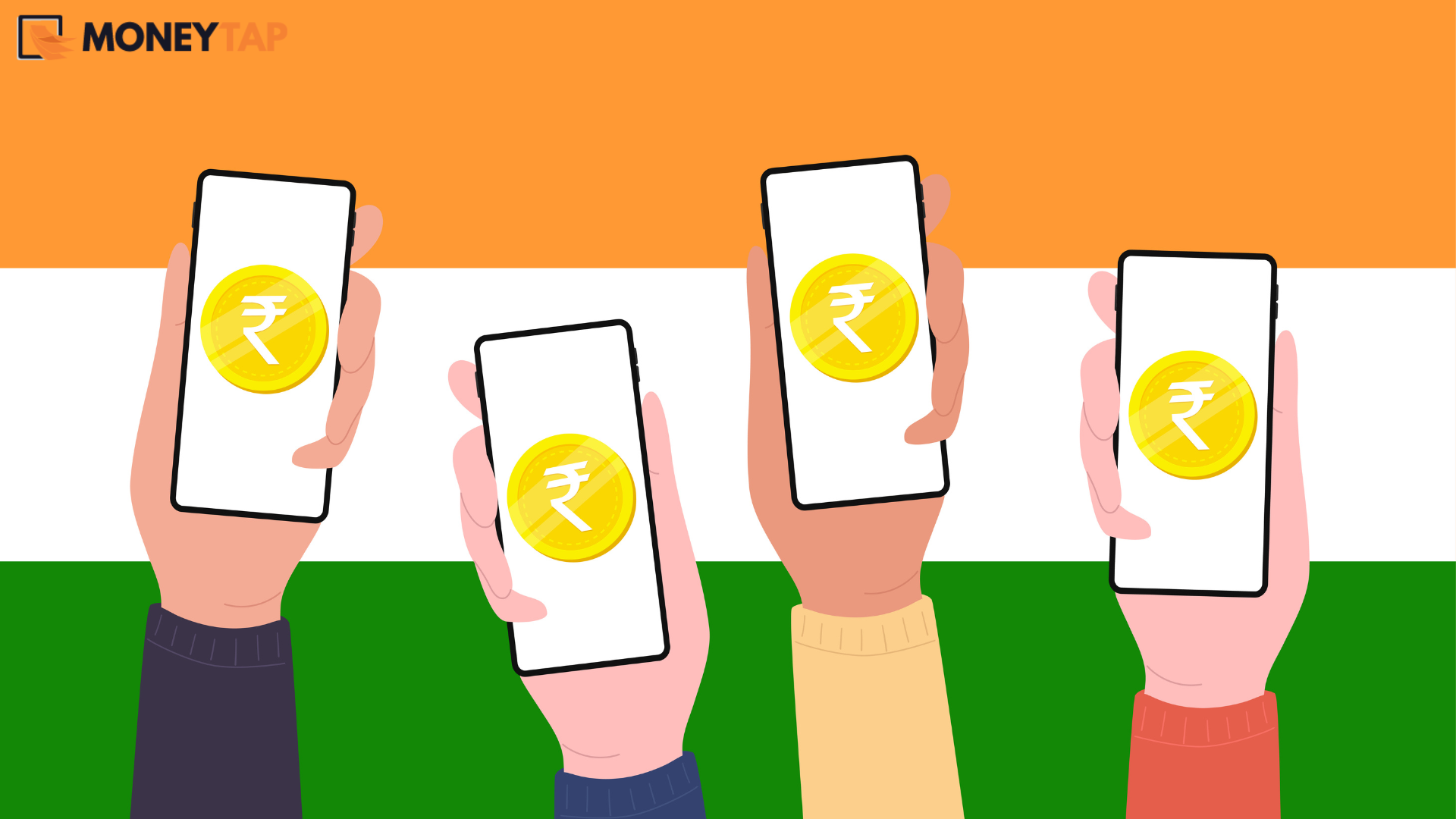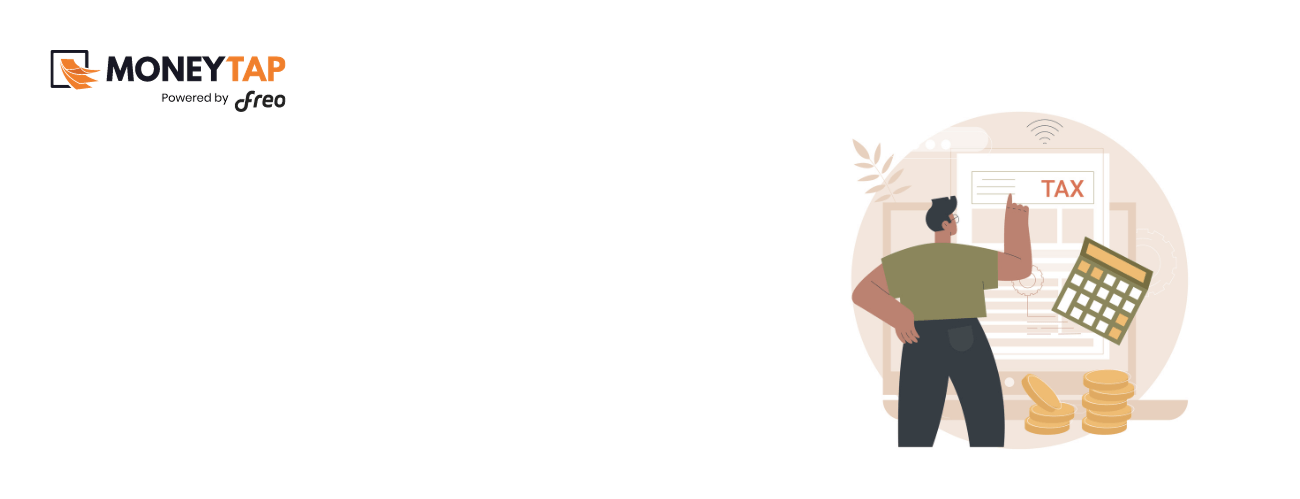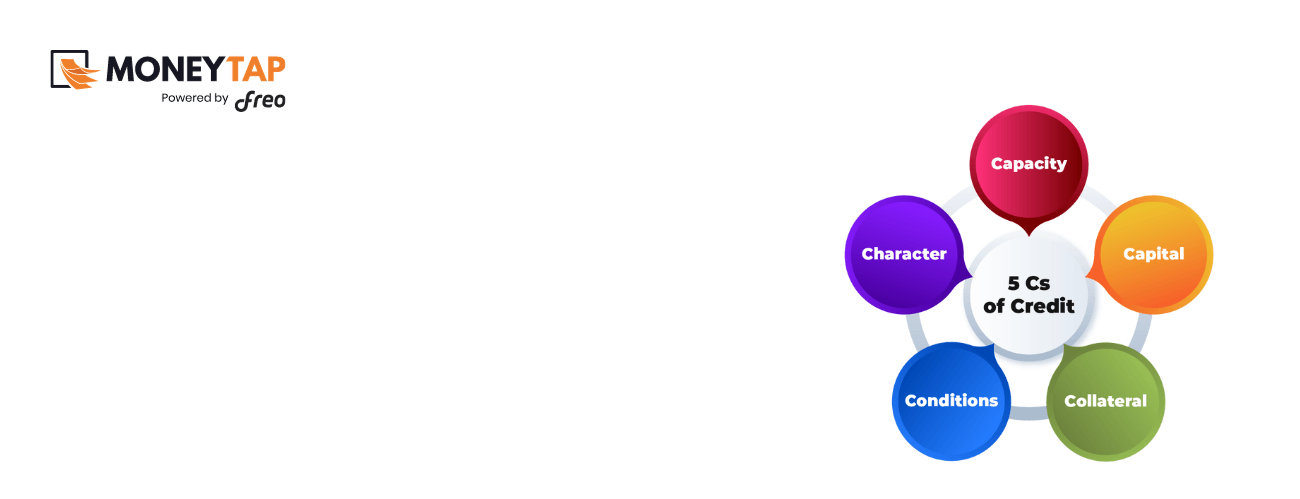Understanding Digital Lending: The Basics and Beyond
Topic
- Around India with MoneyTap 1
- Consumer Durable 1
- Credit Cards 32
- Credit Score 27
- Finance 33
- General 52
- Know MoneyTap Better 26
- MoneyTap 50
- MoneyTap in Daily Life 38
- Personal Loan 86
- Shopping on EMI 4
- Wedding Loan 1
Financial technology, or fintech, is often hailed as a powerful tool for promoting financial inclusion in India. In recent years, the banking, financial services, and insurance sectors have experienced a surge in popularity, and the major credit for it goes to the fintech innovations that have revolutionized the way loans are procured and disbursed. One of the most exciting developments in this field is digital lending.
What is Digital Lending?
Digital lending is a type of loan acquisition method that allows individuals to apply for and receive loans through online platforms without having to visit a physical bank or financial institution. This method enables borrowers to complete the entire loan application process, receive the loan, and make repayments online.
This form of lending has become increasingly popular among younger, tech-savvy borrowers, who appreciate the convenience and flexibility it offers. Thanks to the widespread availability of smartphones and the growing range of credit options available, digital lending has experienced phenomenal growth in recent years.
How Does Digital Lending Work?
The application process for digital lending is simple and can be completed online in just a few clicks. Once the borrower has submitted their personal information and the necessary documents, the loan application is processed and approved within a few hours to a few days. Following approval, the loan amount is transferred directly into the borrower’s bank account.
One of the key advantages of digital lending is that fintech companies can use real-time data to quickly and efficiently underwrite loans. By analyzing digital payment data, these companies can offer credit-based payment products like Buy Now Pay Later (BNPL) or EMI products, which are quickly replacing traditional offline transactions. By using customers’ financial and transactional data to underwrite loans on an API-driven approach, fintech companies can significantly reduce the time required to obtain a loan.
All of this adds up to a more seamless and hassle-free borrowing experience for customers. By eliminating many of the obstacles and inefficiencies that have traditionally been associated with obtaining loans offline, digital lending has played a vital role in promoting financial inclusion and empowering borrowers in India.
Growth of Digital Lending in India
Digital lending is a rapidly expanding sector in the Indian fintech industry. Over the past few years, this sector has seen an extraordinary growth, going from a value of nine billion dollars in 2012 to almost 150 billion dollars in 2020. Experts anticipate that the market will continue to grow, and it is predicted to reach a staggering value of 350 billion dollars by 2023.
This flourishing business has mainly been dominated by fintech startups and non-banking financial companies (NBFC). They are revolutionizing the lending sector by leveraging technology to provide quick, accessible, and convenient loan services.
What are the Key Benefits of Digital Lending?
-
Streamlining the Application Process
When financial institutions consolidate and digitize customer information, it significantly improves the borrower experience. This leads to better transparency, shorter decision times, and reduced frustration for customers. The process eliminates incomplete files and encourages better communication with customers to ensure they provide all necessary information upfront.
Furthermore, an online loan application creates a centralized database for all the application data, which updates automatically when the customer provides additional information. Overall, consolidating and digitizing customer information lending benefits both the borrower and the financial institution.
-
Digitizing the Lending Information
Digitizing and consolidating customer information in lending offers a variety of benefits for borrowers and lenders. By streamlining the flow of information, digital lending systems can significantly improve the borrower experience. Loan processors can easily collect third-party data from credit bureaus and other financial sources, reducing errors and speeding up the decision-making process.
Additionally, lenders can access all borrower information from one centralized location, making it easier to track decision processes and improve audit tracking. Ultimately, digitizing and consolidating customer information can improve transparency, reduce bottlenecks, and deliver a better lending experience for everyone involved.
-
Using Lending Information for Analysis
Financial institutions can enhance their lending process by digitizing the analytics and intelligence areas. This step can address the problem of varying estimates and assessments that often lead to faulty calculations, incorrect credit decisions, and inaccurate reporting. By integrating a digital lending system into a digital banking platform, each loan product can be analyzed, approved, and priced quickly and accurately.
Moreover, lenders can gather lending data that can provide insights for evaluating portfolio risk and making strategic decisions. This digital approach can simplify the lending process, minimize errors, and enable lenders to make informed decisions.
-
Offering Mobile Lending Features and Document e-Signing
Millennials and other specific customers prefer mobile features because they are used to doing most tasks from their phones, including accessing lending materials. They find it inconvenient to visit physical branch locations to review and sign documents when electronic loan procedures are available.
This inconvenience can prompt them to look for digital loan providers that offer hassle-free and convenient services. Therefore, financial institutions need to embrace mobile technology and offer digital lending options to meet the evolving needs of their customers and remain competitive.
-
Providing Loan Options for No-Credit Customers
Credit scores are a crucial tool for financial institutions in assessing potential borrowers’ past borrowing behaviour, which is why they heavily rely on them in traditional lending practices. However, first-time borrowers with no established credit history often face challenges obtaining loans from traditional lenders.
Digital lenders, on the other hand, offer a more flexible and lenient loan approval process for short-term loans like BNPL, relying on alternative credit score data or little to no financial information. This approach expands the customer base of financial institutions and enables them to supply more loans, making digital lenders an increasingly preferred option for financially-strapped and non-banked customers.
Digital Lending Vs Traditional Lending
Here’s a table comparing digital lending and traditional lending:
| Criteria | Digital Lending | Traditional Lending |
|---|---|---|
| Application Process | Online applications, often with fast decision-making | In-person applications, may take longer to approve |
| Speed of Funding | Funding can be approved and transferred quickly | Funding may take longer to process and receive |
| Credit Requirements | May consider alternative data sources in addition to credit score | Emphasis on credit score and history |
| Customer Experience | Convenient, accessible, and may offer personalized experiences | May have more limited access to products and services |
| Loan Amounts | May offer smaller loan amounts or customized loan products | Often provides larger loan amounts |
| Risk Assessment | Uses technology and algorithms to assess risk | May rely more on manual underwriting and loan officers |
| Interest Rates | May offer lower interest rates due to lower overhead costs | Rates may be higher due to traditional overhead costs |
| Repayment Terms | May offer more flexible repayment terms and payment options | Generally more rigid repayment terms and fewer options |
| Collateral | May offer unsecured loans | May require collateral or security for loans |
Digital Lending Platforms in India
Digital lending platforms have revolutionized the lending process, making it easier, faster, and more convenient. Here are seven prominent digital lending platforms in India:
- MoneyTap
- Lendingkart
- Pine Labs
- MobiKwik
- Shiksha Finance
- Paytm
- Faircent
How is Digital Lending Helping the MSME and SME Sectors?
Digital lending has revolutionized how micro, small, and medium-sized enterprises (MSMEs) and small and medium-sized enterprises (SMEs) access finance. With traditional banks often unwilling or unable to provide small loans to these businesses, digital lending platforms offer a fast and convenient way for them to secure funding.
Digital lenders can use machine learning algorithms to quickly evaluate a business’s creditworthiness and risk profile, providing a decision on a loan application in a matter of hours, if not minutes. This has made it possible for MSMEs and SMEs to access financing that they might not have been able to obtain from traditional lenders.
Digital lending has also reduced the time and costs associated with loan applications. Instead of having to submit physical copies of documents and go through lengthy application processes, businesses can now apply for loans online, using digital signatures and secure document-sharing platforms. This has made it easier for businesses to access the finance they need, allowing them to invest in their operations, expand their customer base, and improve their overall competitiveness.
Overall, digital lending is helping to level the playing field for MSMEs and SMEs, enabling them to access finance quickly and easily and compete more effectively in today’s fast-paced digital economy.
FAQs
-
Who can you avail of digital lending services?
For individuals with a regular income and a good credit score, digital lending services can be a convenient way to obtain loans. However, most digital lenders require the borrower to provide valid ID proof, such as a PAN card or Aadhaar card, in order to apply for a loan.
-
What are the benefits of digital lending?
Digital lending has several advantages over traditional loan options. The loan application process is fast and convenient, and borrowers can apply for loans online without the need for physical visits to banks or financial institutions. Additionally, digital lenders offer lower interest rates, making loans more affordable for borrowers. Once the loan is approved, the loan amount is quickly disbursed directly into the borrower’s bank account. Overall, digital lending provides a convenient, cost-effective, and efficient way to obtain loans.
-
What are the risks associated with digital lending?
Digital lending is a convenient way to access loans, but there are some potential dangers associated with it. One of the major risks is the possibility of loan fraud. It is important for borrowers to exercise caution while applying for loans online and to verify that the lender they are dealing with is trustworthy. Additionally, those with a poor credit history may face challenges such as higher interest rates or even the inability to secure a loan.
-
What documents are required for digital lending?
The documents needed for digital lending may differ depending on the lender but commonly consist of identification proof like PAN or Aadhaar card and income proof like bank statements or salary slips. Furthermore, other necessary documents may include employment details and address proof.
-
How to compare digital lending options?
When exploring digital lending choices, borrowers should evaluate multiple factors, including interest rates, repayment duration, processing fees, and repayment options. In addition to these factors, it’s vital to evaluate the credibility and reputation of the lender and to thoroughly review the loan agreement’s terms and conditions before finalizing the loan.
-
Is digital lending secure?
The majority of digital lending platforms implement encryption and other security measures to secure the private information and financial data of their users. Additionally, several platforms are subject to regulation by government entities and abide by stringent security norms. Nevertheless, it is still essential for borrowers to exercise caution and solely share personal information with reliable and trustworthy lenders.
-
Can I repay my digital loan early?
It is accurate to say that the majority of digital lending providers permit early repayment of loans and may not impose penalties or impose only minimal charges for doing so. This enables borrowers to decrease their overall loan expenses and save money on interest payments.
-
Can I apply for a digital loan with a low credit score?
Individuals with low credit scores can apply for a digital loan. However, these individuals may be subject to higher interest rates, and the loan terms may not be as favourable as those given to borrowers with good credit scores. To increase their likelihood of getting a loan, individuals with low credit scores should aim to improve their credit scores and make sure their financial records are up to date.








 Get it on playstore
Get it on playstore Get it on appstore
Get it on appstore